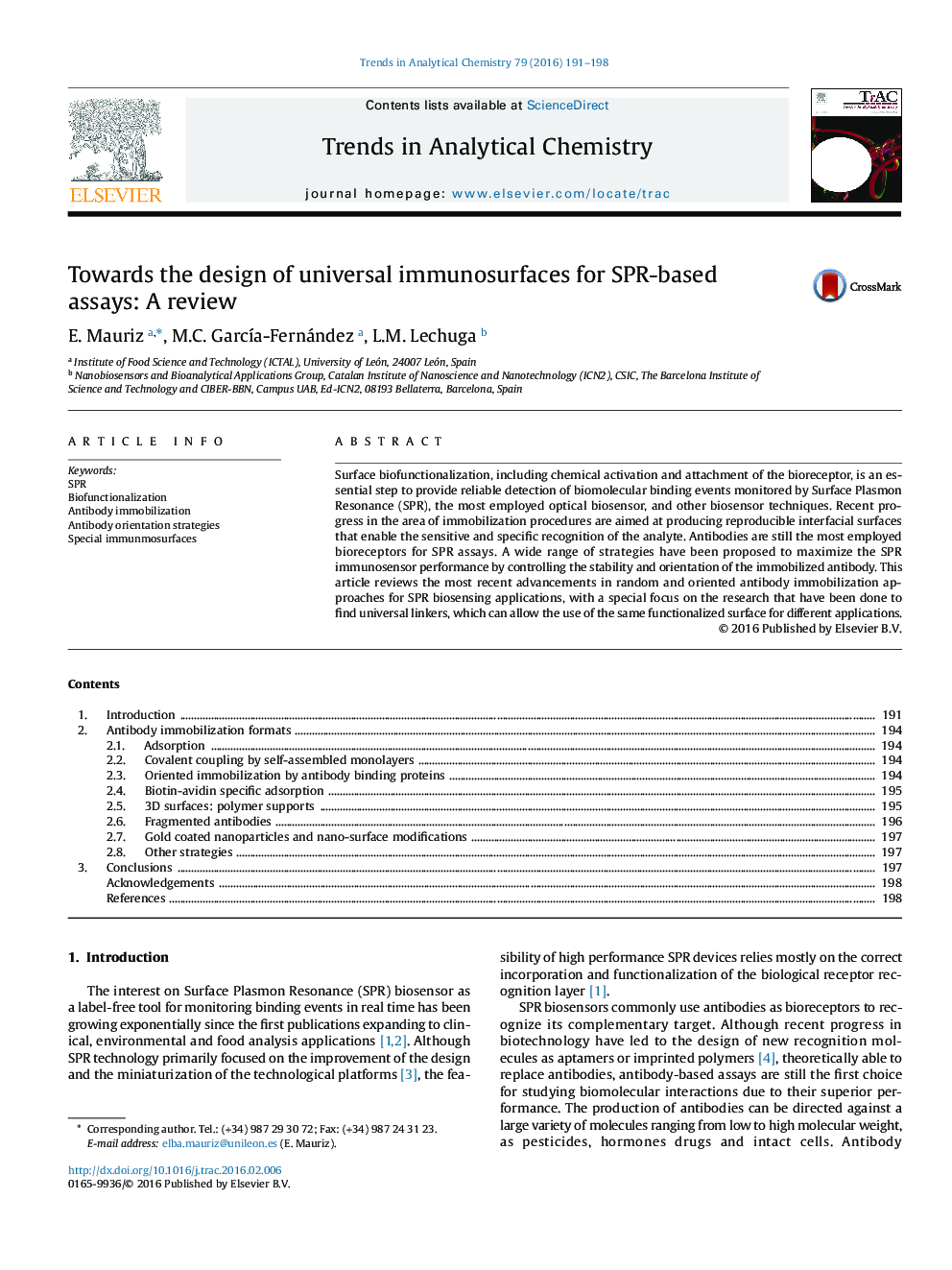| Article ID | Journal | Published Year | Pages | File Type |
|---|---|---|---|---|
| 1248090 | TrAC Trends in Analytical Chemistry | 2016 | 8 Pages |
•The value of selecting the appropriate immobilization method for measuring antigen-antibody interactions.•Recent advances of SPR immobilization strategies for immunoanalytical formats.•Current trends based on the combination of traditional and novel biotechnological alternatives.•Functionalization of SPR biosensor surfaces with major applications in clinical diagnostics and real-time analysis.
Surface biofunctionalization, including chemical activation and attachment of the bioreceptor, is an essential step to provide reliable detection of biomolecular binding events monitored by Surface Plasmon Resonance (SPR), the most employed optical biosensor, and other biosensor techniques. Recent progress in the area of immobilization procedures are aimed at producing reproducible interfacial surfaces that enable the sensitive and specific recognition of the analyte. Antibodies are still the most employed bioreceptors for SPR assays. A wide range of strategies have been proposed to maximize the SPR immunosensor performance by controlling the stability and orientation of the immobilized antibody. This article reviews the most recent advancements in random and oriented antibody immobilization approaches for SPR biosensing applications, with a special focus on the research that have been done to find universal linkers, which can allow the use of the same functionalized surface for different applications.
